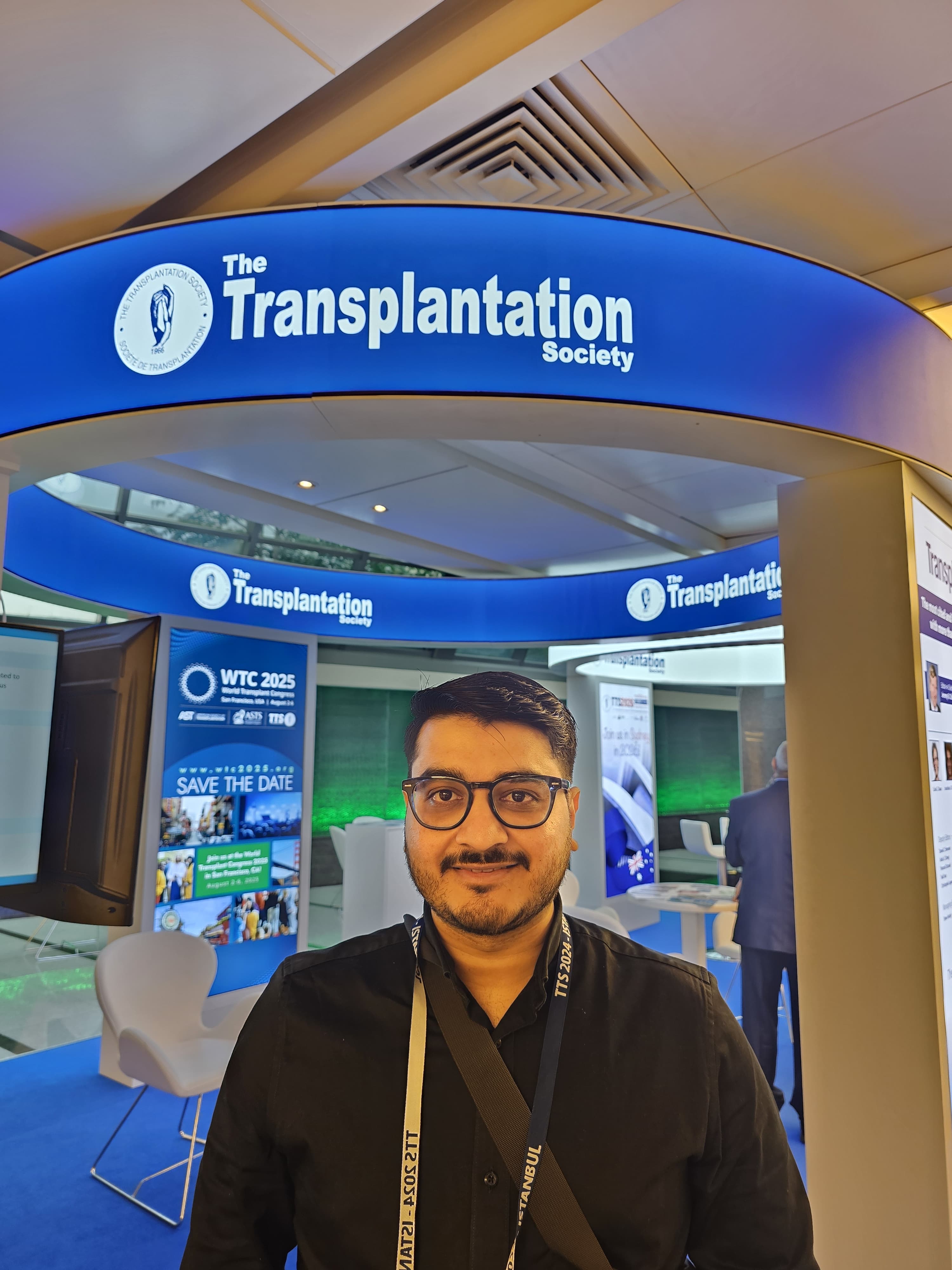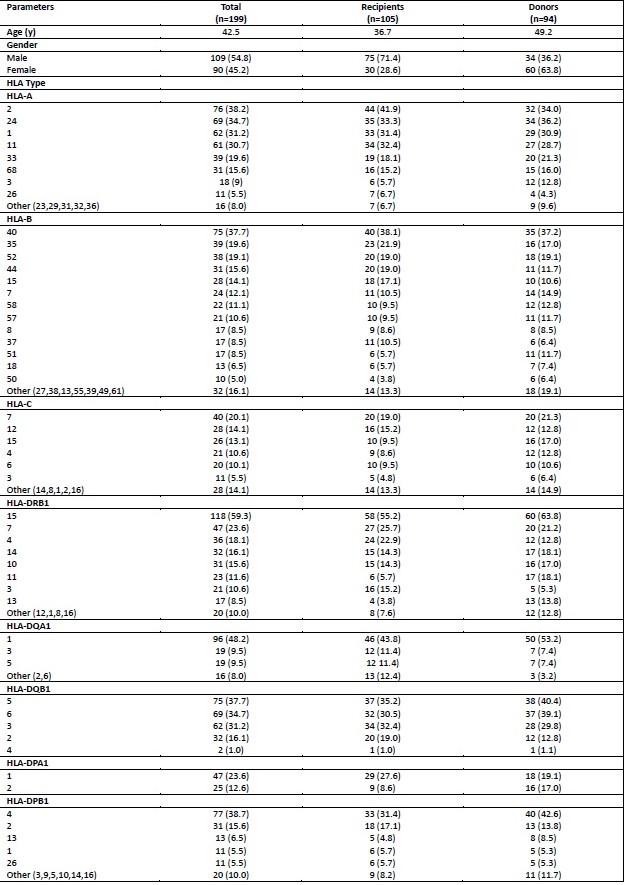
Human leukocyte antigen distribution among kidney transplant donors and recipients: Data from central Indian region
Amit S Pasari1,2, Manish R Balwani1,2, Charulata Bawankule1,2, Kapil Sejpal1, Prasad Gurjar1, Pranjal Kashiv1, Shubham Dubey1, Sunny Malde1, Sushrut Gupta1, Twinkle Pawar1.
1Nephrology, JNMC, Sawangi, Wardha, India; 2Nephrology, Saraswati Kidney Care Center, Nagpur, India
Introduction: Human leukocyte antigen (HLA) has a significant role in immunological response in kidney transplant (KT). Understanding the population prevalence of specific HLA alleles can help in better selection of KT recipients and donors. Diverse genetics of Indian population also call for understanding the HLA allele frequencies in population. The large-scale studies or genetic databases that report HLA allele frequencies in Indian population are still lacking. The objective of our study was to determine the frequencies of HLA class I and class II alleles from the HLA evaluations performed in the KT recipients and their donors.
Methods: In this observational study, the genetic database at our transplant unit from central India was screened. We included the reports of HLA alleles determined for KT recipients as well as donors. The frequencies of HLA alleles from each class were determined with descriptive statistics.
Results: We retrieved the data of 199 HLA reports performed between October 2019 and February 2024. Among these, 105 (52.8%) were of KT recipients and 94 (47.2%) were of donors. The mean age of the population was 42.5 years and 54.8% were males. In class I HLAs, HLA-A*2, *24, *1 and *11 were seen in 38.2%, 34.7%, 31.2% and 30.7% of population, respectively. In HLA-B and HLA-C, alleles HLA-B*40 (37.7%) and HLA-C*7 (20.1%) were most frequent. In class II HLAs, alleles DRB1*15 (59.3%), DQA1*1 (48.2%), DQB1*5 (37.7%), DPA1*1 (23.6%), DPB1*4 (38.7%) were the most frequent alleles. The most frequent allele in each category of HLA included HLA-A*02*11 (13.5%), HLA-B*40*06 (23.1%), HLA-C*07*02 (8.0%), HLA-DRB1*15*01 (23.6%), HLA-DQA1*01*01 (16.1%), HLA-DQB1*05*01 (12.5%), HLA-DPA1*01*03 (23.1%), and HLA-DPB1*04*01 (31.6%). Figure provides the details of other antigens in each HLA category among KT recipients and their donors.
Conclusion: In central Indian population, HLA-A*2, A*24, B*40, C*7, DRB1*15, DQA1*1, DQB1*5 DPA1*1 and DPB1*4 are the most frequent HLA alleles. The matching profile of KT recipients and donors indicates the likely possibility of finding an HLA matched donor for the prospective recipient from the same region. Further studies in a larger sample will provide more definitive population data.

Dr Vijay Katekhaye. Miss Kajal Gajbhiye. Miss Shalini Patle.
[1] HLA
[2] Kidney transplantation
[3] India
[4] Epidemiology
